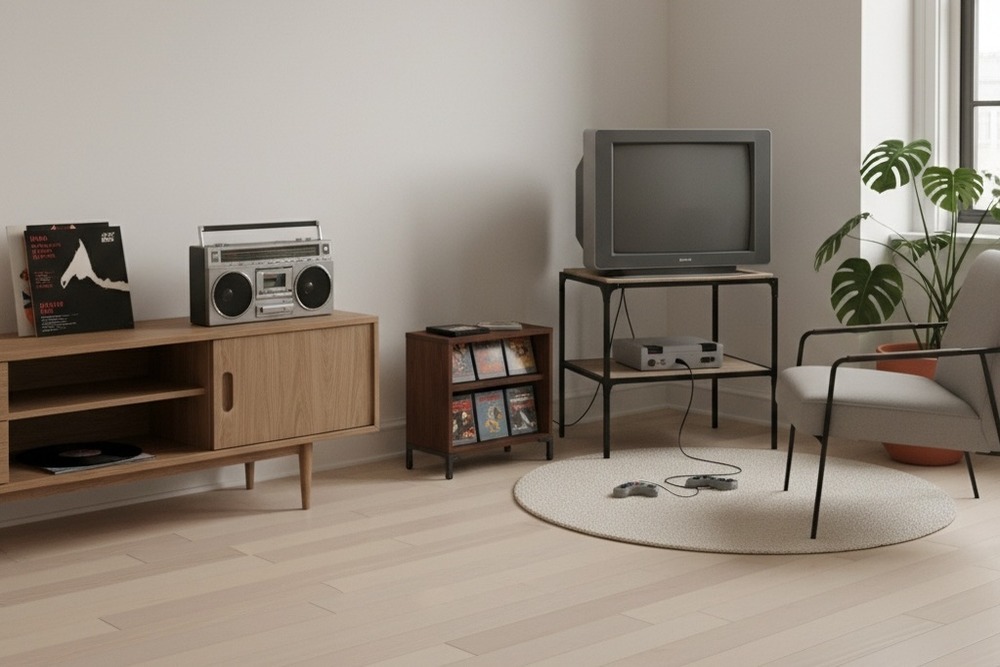From Obsolete to Trendy: Tech Gadgets Making a Comeback
Ethan Sawyer
2025-09-06
6 min read

In the fast-paced world of technology, yesterday's cutting-edge innovation often becomes tomorrow's forgotten relic. Yet something fascinating is happening in our digital landscape: gadgets that were once deemed obsolete are experiencing remarkable revivals, capturing the hearts and wallets of both nostalgic millennials and curious Gen Z consumers. This trend reveals something profound about our relationship with technology and the cyclical nature of innovation.
The Psychology Behind Retro Tech Revival
The resurgence of vintage technology isn't just about nostalgia, though that certainly plays a significant role. Many consumers are experiencing what psychologists call "digital fatigue" – a weariness with the constant connectivity and overwhelming complexity of modern devices. Retro gadgets offer a form of technological minimalism that feels refreshing in our hyperconnected world. These older devices often embody a principle that modern technology has largely abandoned: they do one thing, and they do it well. Unlike smartphones that juggle countless functions with varying degrees of success, a vintage Game Boy was designed solely to play games, and it excelled at that singular purpose. This focused functionality appeals to users who crave simplicity and reliability over endless features. The tangible nature of vintage tech also provides something that modern devices often lack: a physical connection to the experience. The satisfying click of mechanical keyboard keys, the warm glow of a CRT monitor, or the ritual of inserting a cassette tape creates a sensory experience that touchscreens and wireless connections cannot replicate.
Vinyl Records and Turntables Lead the Charge
Perhaps no retro technology better exemplifies this comeback trend than vinyl records and turntables. After nearly disappearing in the 1990s with the rise of CDs and digital music, vinyl sales have grown consistently for over a decade. The format now represents a significant portion of physical music sales, with many new albums receiving vinyl releases alongside digital versions. The appeal goes beyond the warm, analog sound that audiophiles praise. Purchasing vinyl creates a ritualistic experience – carefully removing the record from its sleeve, placing it on the turntable, and actively engaging with the music rather than passively streaming it. Album artwork regains its importance as a large, tangible canvas rather than a tiny thumbnail on a screen. Young consumers who grew up in the digital age find vinyl particularly appealing because it represents something they've never experienced. For them, vinyl isn't nostalgic – it's novel. This demographic drives much of the current vinyl boom, proving that retro tech appeal isn't limited to those who remember using these devices originally.
Digital Cameras Capture New Audiences
Film photography and vintage digital cameras are experiencing their own renaissance, particularly among younger generations seeking authentic experiences in an age of filtered social media posts. Disposable cameras, once considered wasteful and primitive, now command premium prices and sell out regularly at urban retailers. The appeal lies partly in the unpredictability and limitations these cameras impose. Unlike smartphone cameras with their instant previews and unlimited storage, film cameras force users to be more deliberate with their shots. The delayed gratification of developing film and the possibility of unexpected results create excitement that digital photography has largely eliminated. Even early digital cameras from the 2000s are finding new life. Their lower resolution and unique color characteristics produce images that stand out against the clinical perfection of modern smartphone photos. This "lo-fi" aesthetic has become desirable among artists and social media users looking to differentiate their work.

Gaming Goes Retro
The gaming industry has embraced retro technology with remarkable enthusiasm. Nintendo's release of miniaturized versions of classic consoles like the NES Classic and SNES Classic generated enormous demand, often selling out immediately upon release. These devices proved that modern consumers were hungry for the simpler gaming experiences of decades past. Handheld gaming devices are also making a comeback. While smartphones theoretically offer superior gaming capabilities, dedicated handhelds like the Nintendo Switch and various retro-inspired devices provide focused gaming experiences without the distractions of notifications, calls, or other apps. The physical controls and longer battery life of dedicated gaming devices appeal to serious players who want uninterrupted gaming sessions. The popularity of retro gaming extends beyond hardware to software. Game developers regularly release new titles designed to look and feel like classic games from the 8-bit and 16-bit eras. These "retro-style" games prove that cutting-edge graphics aren't always necessary for engaging gameplay.
The Mechanical Keyboard Renaissance
Computer keyboards represent another compelling comeback story. After dominating the computing landscape for decades, mechanical keyboards largely disappeared in favor of cheaper membrane alternatives. However, they've roared back to life, driven initially by gaming enthusiasts and programmers who appreciated their tactile feedback and durability.
The mechanical keyboard renaissance has expanded far beyond its niche origins. Office workers seeking better typing experiences, writers wanting more satisfying key presses, and even casual users drawn to customization options have embraced these chunky, clicking keyboards. The market now offers countless switch types, keycap designs, and form factors, turning keyboard selection into a deeply personal choice.
Quality Over Quantity
One common thread connecting these retro tech comebacks is build quality. Many vintage devices were constructed to last, using materials and manufacturing processes that prioritized durability over cost savings. A thirty-year-old mechanical keyboard still functions perfectly, while many modern membrane keyboards fail within a few years.
This durability appeals to environmentally conscious consumers tired of constant device replacement cycles. Vintage tech offers an alternative to the throwaway culture of modern electronics, providing functional alternatives that can last decades with proper care.
The Future of Looking Backward
The retro tech revival shows no signs of slowing down. As modern technology becomes increasingly complex and invasive, consumers continue seeking simpler, more intentional alternatives. This trend doesn't represent a rejection of technological progress but rather a desire for balance between innovation and functionality. Manufacturers have taken notice, regularly releasing modern interpretations of classic designs. These products combine vintage aesthetics and simplicity with contemporary reliability and features, offering the best of both worlds. The comeback of obsolete gadgets reminds us that technological progress isn't always linear. Sometimes the most innovative choice is to step backward, rediscovering the focused functionality and physical satisfaction that our digital age has largely abandoned. In a world of infinite options and constant connectivity, perhaps the most rebellious act is choosing a device that does just one thing exceptionally well.



